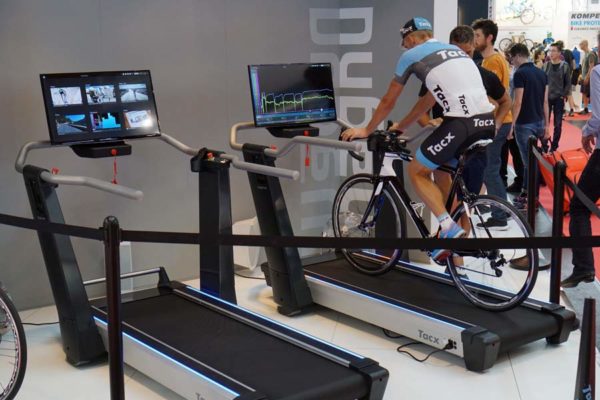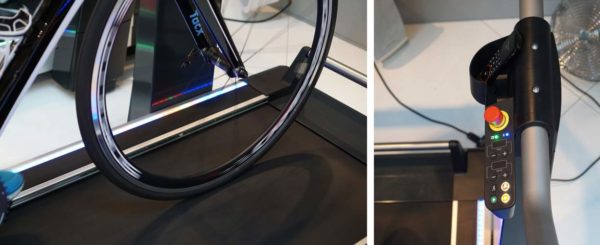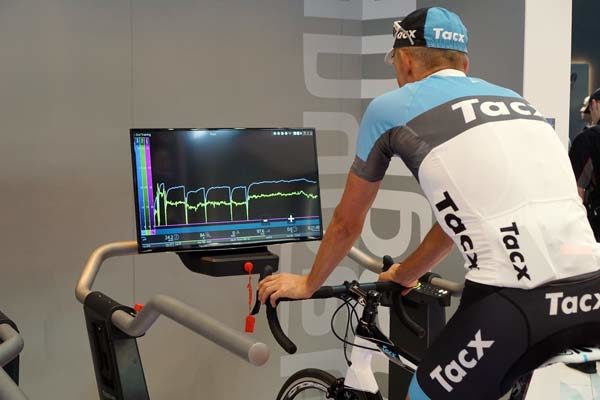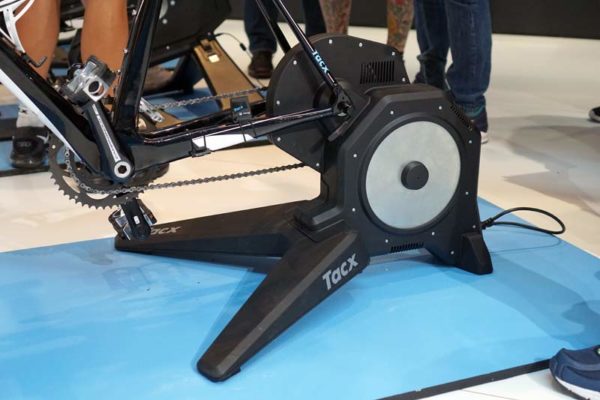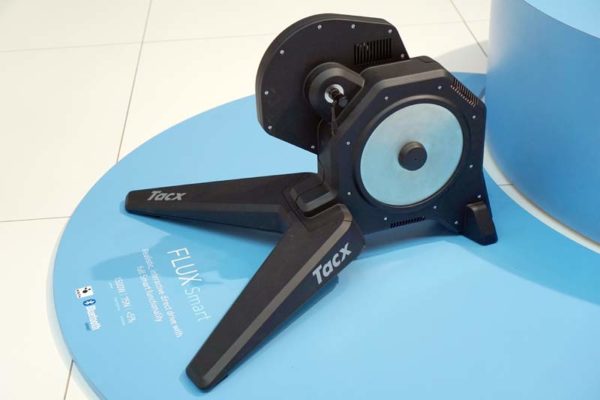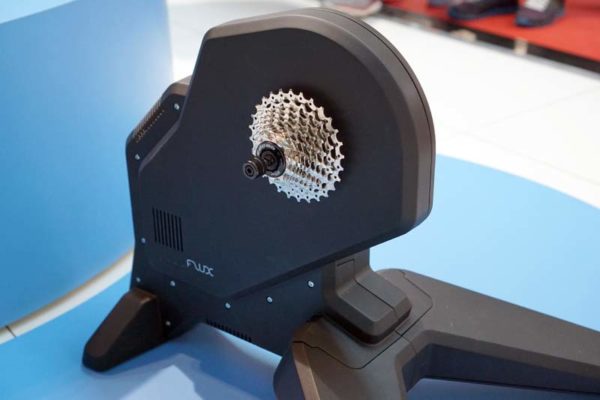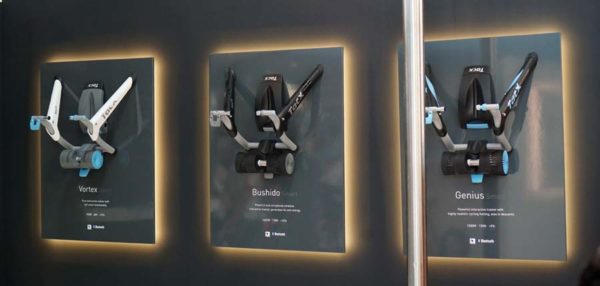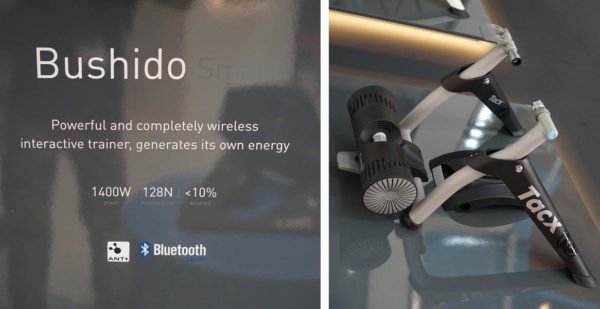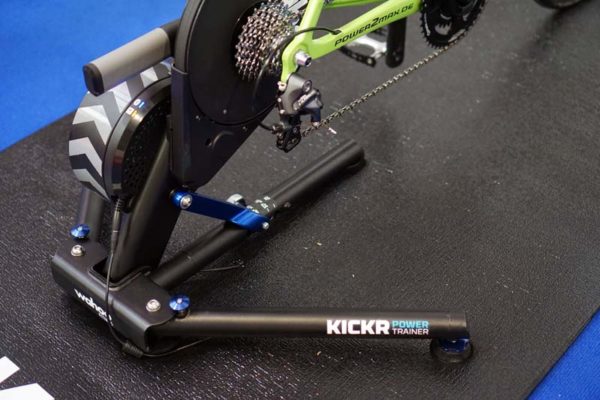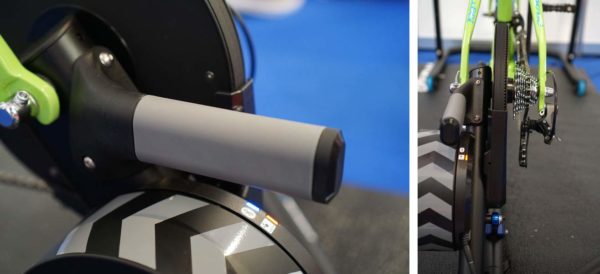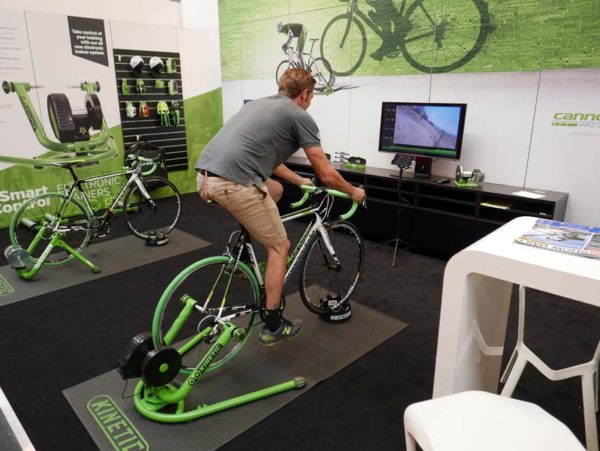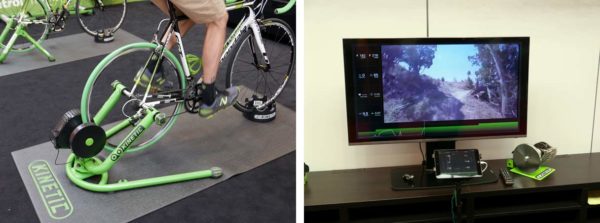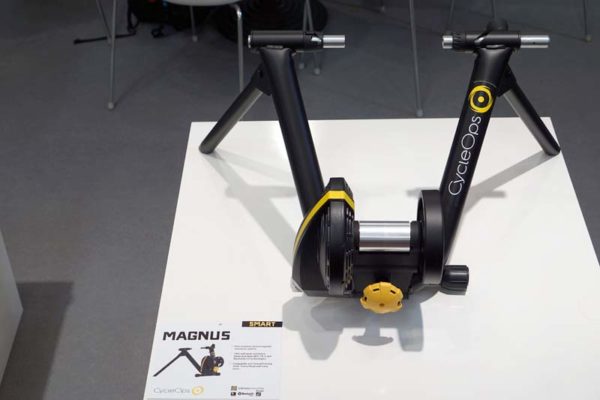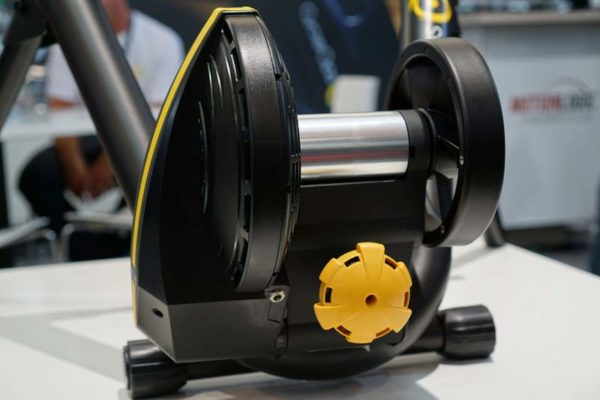For the cyclist who has everything (and can afford anything), TacX is looking their way with the Magnum cycling treadmill. It comes to Europe in October for €8,000, which puts it around $10K or so (North American pricing isn’t set, but it might come here in 2017).
Sensors detect your speed, so as you accelerate or decelerate, it matches your pace to keep you from ramming the front or falling off the back. It reacted fairly quickly with the demo rider, but we wouldn’t jump into full sprint on it.
For the rest of us with limited space (and budgets), there are plenty of new smart trainers with a more traditional footprint…
It can adjust from flat up to a 15% slope, which should make climbing training seem much more realistic…and harder. You can also run on it.
The included screen can show Zwift or anything else you want to hook up to it, or create your own workouts and have that biometric data show up on it. It’s basically a monitor, hook any other device into it.
Their new Flux smart trainer gets the same software as the much more expensive Neo (€1200/$1,600), but is quieter and cheaper at €800 / $899. It caps out at 450w/20 minutes or a peak of 1500w, down from the Neo’s 2200w peak or 800w/20 minutes…because, you know, real people can do that. It also drops the Neo’s steering input, but still works with all popular online and app training services.
It moves the flywheel via direct drive, creates the resistance with eight strong magnets, and controls it via BTLE and ANT+ through apps like Zwift, TrainerRoad, Sufferfest, etc. Thru axles and QR skewers are all supported. Available October in Europe, Nov 1 in USA.
The Flux sits just under the Neo at the top of their smart trainer range, but you’ve got three more options below it: The Vortex (950 watts max), the Bushido (1,400 watts max) and Genius (1,500 watts max). What makes the Bushido the most interesting of the bunch is that it’s wireless, using the flywheel as a generator to create it’s own power. TacX.com
WAHOO
The Wahoo Kickr, one of the original full featured, app controlled smart trainers, gets a hefty set of improvements. Functionality-wise, it’s 14% quieter (measured at just 61 decibels), improves power measurement accuracy to +/-2%, and responds to grade and power changes more quickly. The latter means it’ll feel more like riding IRL when exploring Zwift’s virtual worlds or crank up the intensity faster on TrainerRoad or Sufferfest’s intervals.
The steel frame gets modified to look a little more streamlined and adds an oversized, rubberized handle for easier grab-n-go transport. Available now, retail is $1,199.99. WahooFitness.com
KINETIC
Kinetic’s new smart trainers debuted just before Eurobike, so check that post for all the tech details (and there are a lot of them!), but the gist is this: Take Kinetic’s Rock and Roll floating trainer or Road Machine and add electronically controlled resistance and you’ve got a smart trainer that works with all the same online services and apps as the other brands’ trainers.
What makes them unique, besides the Rock and Roll’s floating system that lets you rock back and forth in the sprints, is their new app that lets you stream your own video playlists, Sufferfest, etc., through the app and still see all your metrics. Watch it on the little screen, or throw it on the big screen through Apple TV or Chromecast. KurtKinetic.com
CYCLEOPS
CycleOps dropped the Hammer, their premium direct drive smart trainer in May, and now they’ve followed it up with a more affordable option that keeps the wheel on your bike. The Magnus uses a 2″ diameter roller that fits anything from a 26″ wheel unto 700c (and presumably a 29er, but not likely to fit plus-sized tires). It spins a smaller flywheel, but they claim it’ll still create up to 1500 watts of resistance, equivalent to riding up a 15% grade. At which point it’s maxing out around 70db, about the same volume as their fluid trainers.
The electronics know what your speed and resistance mean in terms of power, so they’re able to calculate and transmit your power output via Bluetooth Smart (BTLE) and ANT+ to any compatible head unit, or directly into the online/app programs. Electromagnets control the resistance, and they say it reacts quickly to changes in your training program.
The frame is based on their other trainers, so it fits QR and thru axles, but won’t spread far enough to fit the newer Boost bikes. It plugs into the wall, but doesn’t require an app to control it. Without anything (app, phone, etc), it goes into “headless” mode and uses the power curve of their fluid trainers. Unplugged, it’ll only have minimal resistance from the flywheel. Retail will be $599, early fall availability. CycleOps.com
